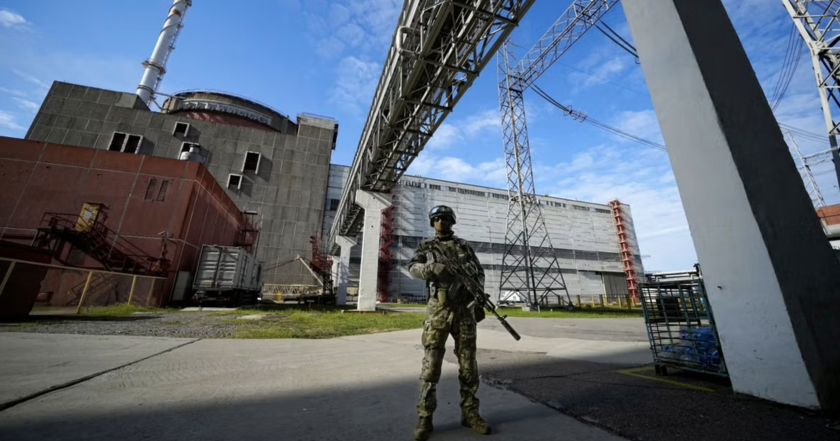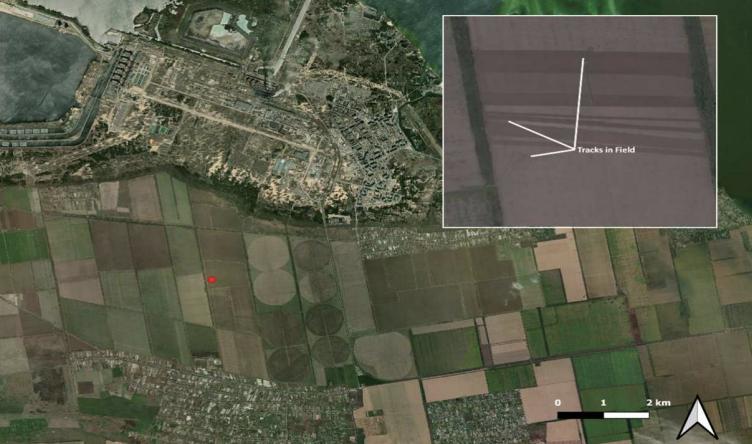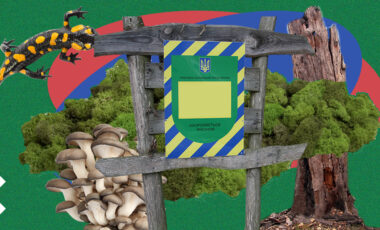Satellite intelligence reveals evidence of Russia using Zaporizhzhia nuclear plant as military cover

Photo: АР
British military analysts from McKenzie Intelligence Services were commissioned by Greenpeace Germany to investigate the locations of Russian weapons on the territory of Ukraine's Zaporizhzhia nuclear plant, which has been under Russian occupation since March last year.
The experts found that the reports of the International Atomic Energy Agency (IAEA), whose mission has been stationed at the plant since August 2022 "to help ensure nuclear safety and security," do not contain data on safety violations by the Russian occupiers.
To prepare the report, McKenzie Intelligence Services analyzed Planet's satellite images and data collected from March 2022 to July 2023, allowing remote sensing analysts to identify numerous Russian missile firing positions within 1 km of the Zaporizhzhia plant.
A report by the independent British intelligence agency McKenzie Intelligence Services provides detailed evidence that the Zaporizhia nuclear power plant is being used strategically and tactically as a military cover by the Russian armed forces in their illegal war against Ukraine.
Based on the findings of a new report, Greenpeace nuclear safety experts warn that Russia is violating all five of the IAEA safety principles, which the agency's mission had not previously reported.

Greenpeace says in a statement that it informed the IAEA Board of the new findings with a call to review the data and effectiveness of the IAEA mission in the Zaporizhzhia plant. Greenpeace urges the board members to increase pressure on Russia, analyze the situation at the Zaporizhzhia plant more carefully, and adopt sweeping sanctions banning or restricting nuclear trade with the Russian state atomic corporation Rosatom.
"The imagery shows that the Russians occupiers are in violation of IAEA principles announced in May by Director General Grossi. Yet the Director General's reporting is incomplete and misleading, including the assessment of Russian non-compliance with safety and security principles," said Shaun Burnie, Greenpeace nuclear specialist. "The Russian armed forces and Rosatom occupation pose a constant nuclear threat to Zaporizhzhia and must be condemned — but currently, the IAEA is unable to fully report on the security and safety hazards they pose. That has to change."
McKenzie's analysis details that Russian forces are equipped with armored vehicles such as the BTR-70 and BTR-80 and Ural and KAMAZ military trucks designed to transport weapons, ammunition, and explosives. The Russian armed forces do not allow the IAEA to inspect the inside of vehicles. Meanwhile, the IAEA continues to report that it does not see any heavy weapons or explosives.
McKenzie analysts have, for the first time, identified numerous GPS locations of Russian multiple rocket launchers (MRLS), including BM-21 "Grad" and BM-30 "Smerch" within a radius of 1 to 18 km from the nuclear plant. McKenzie's analysis reports that these military assets will likely be deployed in nearby settlements, including the town of Vodiane.
There is a high probability that Russian forces are using the proximity of the nuclear power plant as a shield to contain Ukraine's counter-battery fire on their firing positions. Russian military actions on the front line are expected to align with the decisions of armed forces occupying the Zaporizhzhia reactor site.
Last year, IAEA Director General Raphael Grossi said of IAEA inspections in Zaporizhzhia: "We are known as the nuclear watchdog. There are areas that were limited. But all the things we needed to see, we could see." McKenzie's data shows that this is clearly not true. The IAEA Director General's reports to the IAEA and regular communiques are limited in scope, lack serious analysis, and place too much credence in the claims of the Russian military, Greenpeace says.
"The Russian threat to the safety of the nuclear plant is very real and a direct threat to people's lives and the environment of Ukraine and potentially beyond — we do not need the IAEA painting a false narrative," says Shaun Burnie. "The IAEA Board has taken a robust position on the Russian attack and occupation of the Zaporizhzhia nuclear plant, but their member governments have failed to apply effective pressure on Russia, including the lack of sanctions against Rosatom and the continued participation by Russia in IAEA nuclear programs."
Greenpeace calls on the IAEA to review the goals and scope of the agency's mission to cooperate with member countries, especially with the Ukrainian government, and take all possible steps to pressure the Russian army and Rosatom to end the military occupation of the Zaporizhzhia plant as soon as possible.
"The safety and security threat to the Zaporizhzhia nuclear plant will only end when Russian armed forces and Rosatom have left the plant and Ukraine, there is an end to the Russian war against Ukraine and a just peace," the report concluded.

























































